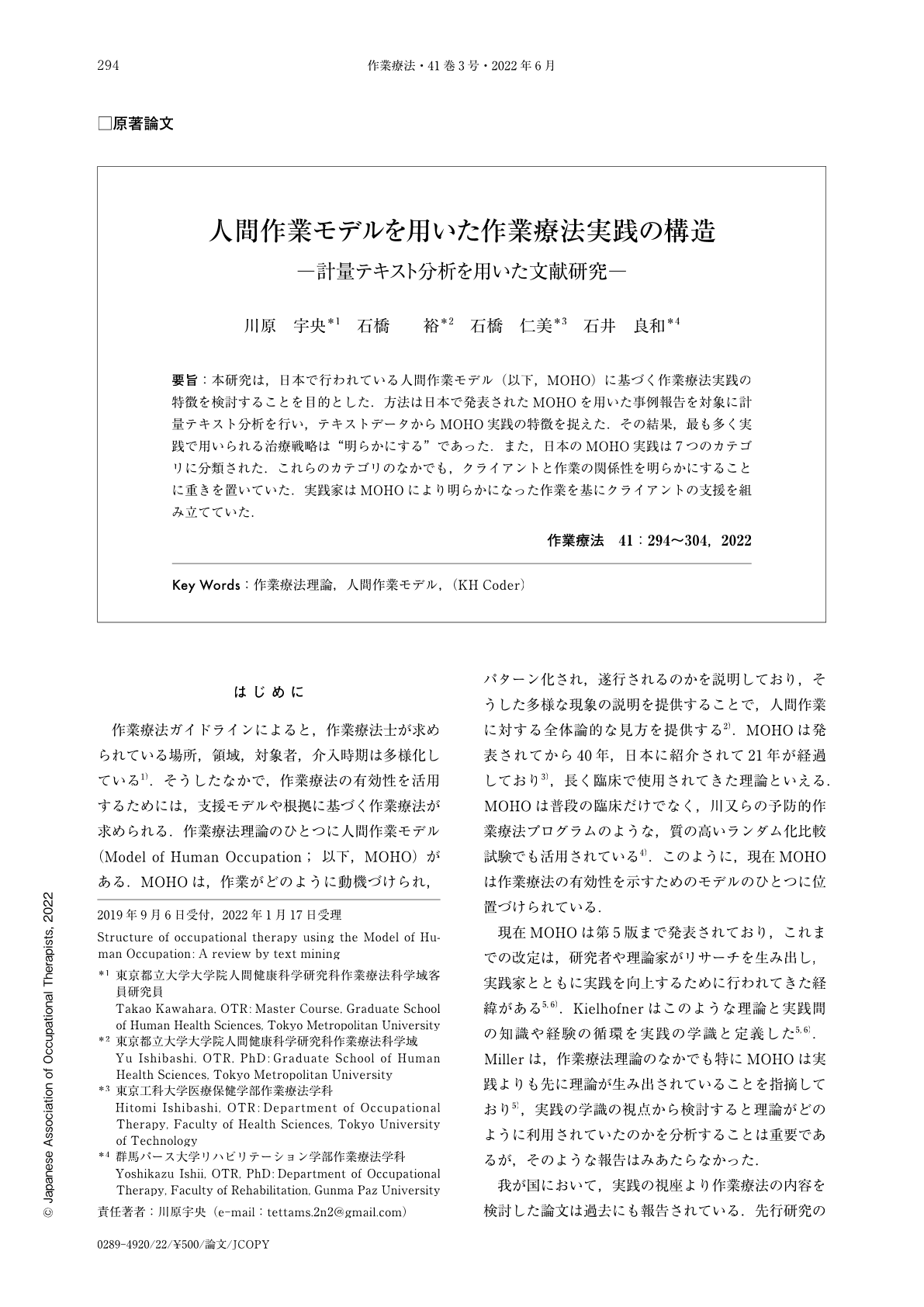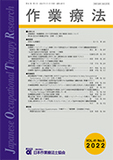Japanese
English
- 販売していません
- Abstract 文献概要
- 1ページ目 Look Inside
- 参考文献 Reference
- サイト内被引用 Cited by
要旨:本研究は,日本で行われている人間作業モデル(以下,MOHO)に基づく作業療法実践の特徴を検討することを目的とした.方法は日本で発表されたMOHOを用いた事例報告を対象に計量テキスト分析を行い,テキストデータからMOHO実践の特徴を捉えた.その結果,最も多く実践で用いられる治療戦略は“明らかにする”であった.また,日本のMOHO実践は7つのカテゴリに分類された.これらのカテゴリのなかでも,クライアントと作業の関係性を明らかにすることに重きを置いていた.実践家はMOHOにより明らかになった作業を基にクライアントの支援を組み立てていた.
The purpose of this study was to examine the characteristics of occupational therapy based on the Model of Human Occupation (MOHO) performed in Japan. The method includes analyzing the case reports quantitatively using MOHO published in Japan, and grasping the characteristics of MOHO practice from the text data. As a result, the most commonly used therapeutic strategy in practice was “identify”. Practice with MOHO is formed from seven categories. Within these categories, the emphasis was on clarifying the relationship between the client and the occupation. The practitioner built the client's support based on the occupation revealed by MOHO.

Copyright © 2022, Japanese Association of Occupational Therapists. All rights reserved.


